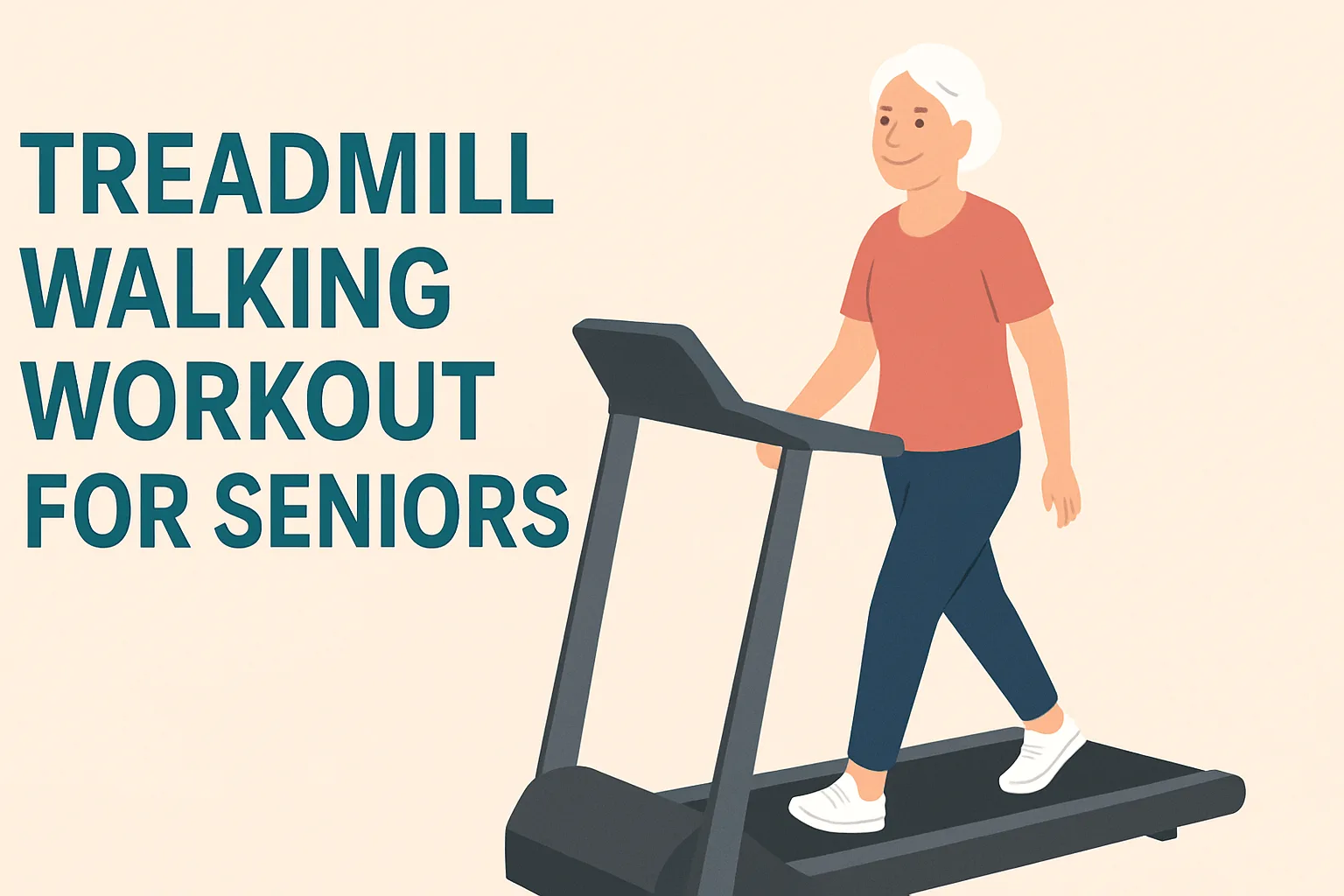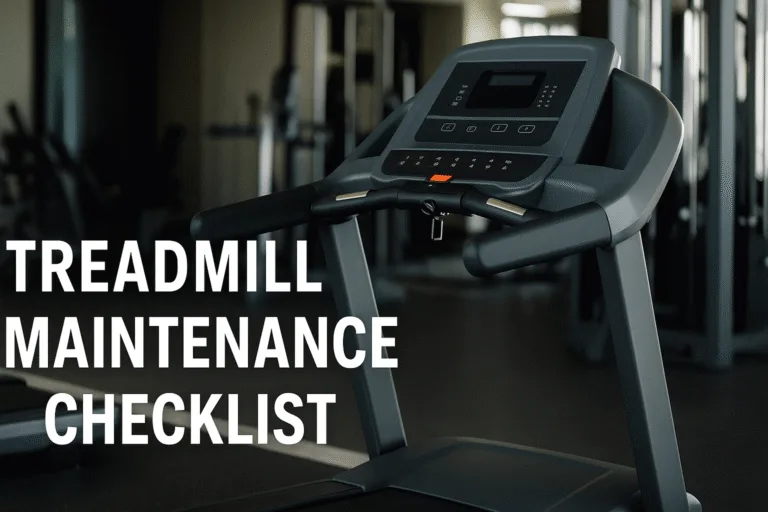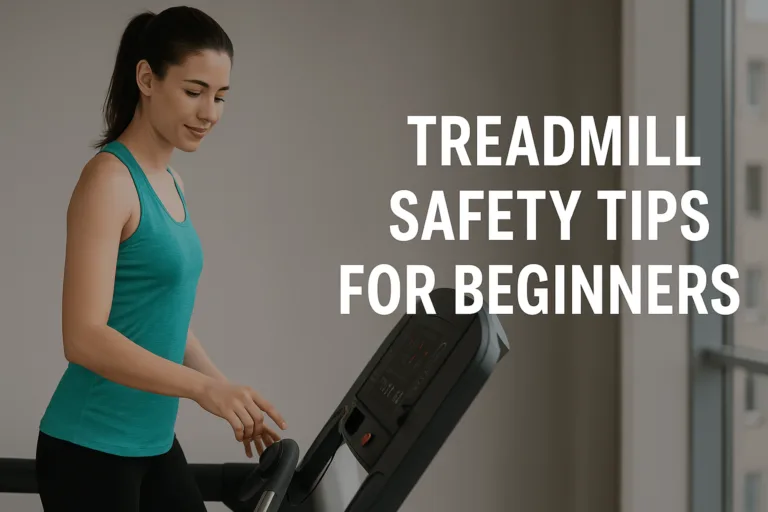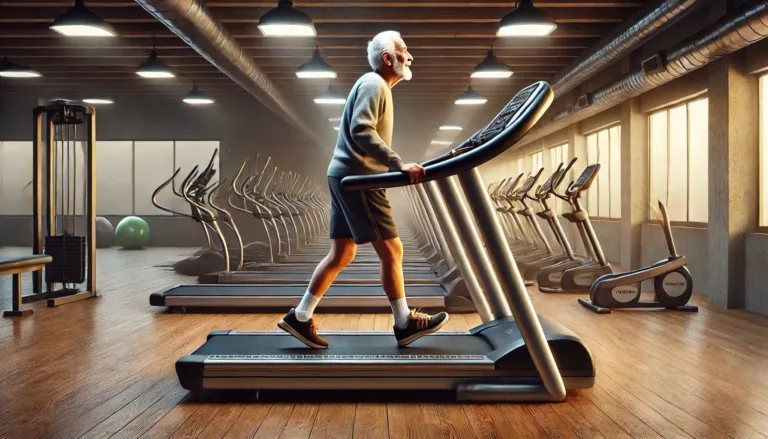Every fitness enthusiast needs to be aware of common treadmill mistakes, especially if you’re a beginner or a senior. We all want to stay safe and get the most out of our workouts.
Treadmills are a popular choice for cardio, but many users might not realize how they could be misusing them. Even minor missteps can lead to injuries, less satisfying results, or wasted time.
In this post, we’re excited to highlight the most common treadmill mistakes and share some easy, practical tips to help you steer clear of them so you can successfully reach your workout goals.
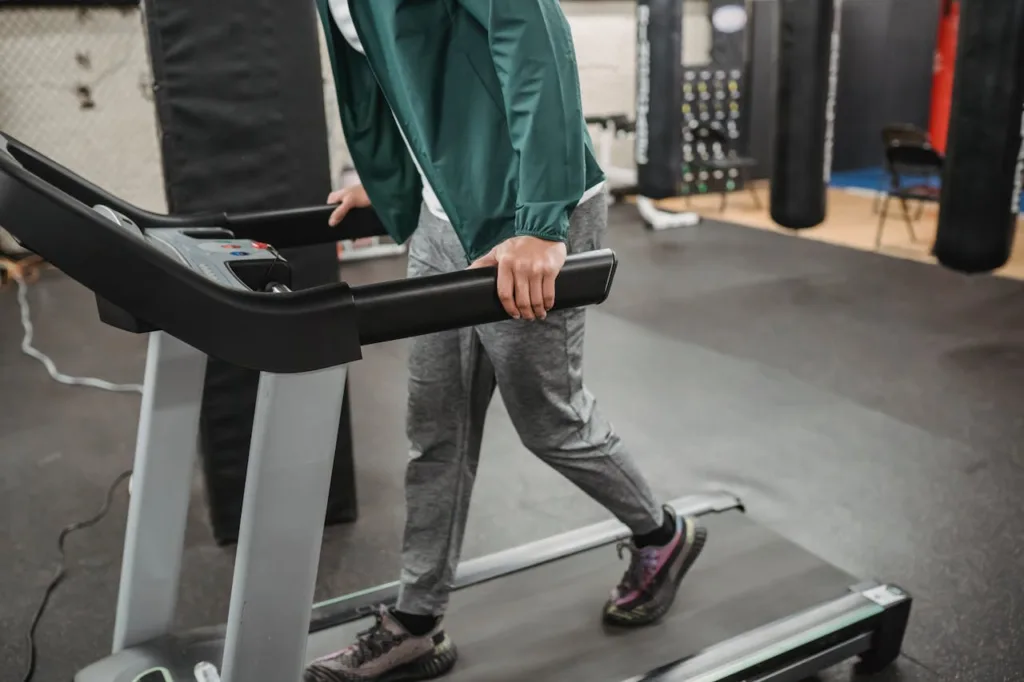
1. Choosing the Wrong Treadmill for Your Needs
One of the most commonly overlooked treadmill mistakes happens even before you take your first step: choosing a treadmill that doesn’t fit your body type, fitness goals, or available space. If you choose a treadmill with a low weight limit, limited cushioning, or a high step-up height, it may not only be uncomfortable but also pose safety concerns.
How to Avoid
Before purchasing or using a treadmill, consider your weight, height, stride length, and any joint issues. Check the treadmill’s weight capacity, deck size, cushioning, and step-up height. Also, make sure it fits well in your workout space and offers the features you’ll use, such as an incline, programs, or the ability to fold.
2. Not Wearing Proper Footwear
Poor footwear can cause discomfort, blisters, or even lead to more serious injuries, such as ankle sprains, shin splints, or knee pain. Running or walking on a treadmill requires shoes that provide proper support, cushioning, and stability.
Shoes designed for walking or running help absorb the impact on your joints and provide the grip needed for safe movement. Wearing casual shoes, sandals, or old, worn-out sneakers can increase your risk of injury and negatively affect your workout.
How to Avoid
Choose shoes that are designed explicitly for treadmill workouts or running. Look for features like good arch support, adequate cushioning, and a firm sole. If you’re unsure, visit a store where professionals can help you choose the right pair based on your foot type and activity level.
3. Skipping the Warm-Up
A common mistake, particularly among beginners, is starting a treadmill workout without warming up first. Although it may appear to save time, neglecting the warm-up can result in muscle strain, decreased performance, and potential injuries.
A proper warm-up allows your body to adapt to increased activity gradually. It elevates your heart rate, boosts blood flow to your muscles, and readies your joints for movement.
How to Avoid
Start every treadmill workout with a 5 to 10 minutes warm-up. Initiate with a slow walking pace (approximately 2–3 mph) and slowly increase your speed. Additionally, consider incorporating dynamic stretches, such as leg swings or arm circles, before starting on the treadmill.
4. Excessive Speed or Early Incline
It’s so easy to get excited and push yourself when you’re eager to see results! But remember, cranking up the treadmill speed or incline too high, too quickly can quickly lead to exhaustion, improper form, or even injury.
How to Avoid
Begin at a slow pace, especially if you’re new to treadmill workouts. As your fitness level increases, gradually enhance both the speed and incline. For instance, start with a brisk walk and then move on to a light jog or run.
5. Holding Onto the Handrails
While it may seem safer to grasp the handrails, especially when going faster or tackling inclines, this habit can actually affect your posture, lower your calorie burn, and unnecessarily stress your wrists and shoulders.
When you hold on, it alters your natural stride and balance, which means you might not get as much benefit from your exercise.
How to Avoid
Feel free to use the handrails when you’re just starting, stopping, or adjusting the settings. If you ever feel a bit unsteady, it’s perfectly okay to lower your speed or incline to a more comfortable level where you can walk or run naturally without holding on.
6. Looking Down or Around Too Often
Looking down at your feet or frequently glancing around while using the treadmill might seem like a small thing, but it can affect your balance and lead to missteps or falls. Plus, it can disrupt your posture and stride, making your workout less effective.
How to Avoid
Keep your gaze looking forward, around eye level, or slightly lower. Find a focal point ahead of you to help maintain a steady line of sight. If you need to check the console, take a quick glance and then look back up. It’s best to avoid using your phone and stay focused during your workout.
7. Poor Posture While Running or Walking
Keeping proper posture on the treadmill is really important, yet it’s something many of us tend to overlook. When we don’t maintain good form, like slouching, leaning too far forward, or staring at our feet, it can cause neck pain, back strain, and make our movements less effective. Plus, it can take away from the overall quality of our workout!
How to Avoid
Stay positive by keeping your head up, looking forward, and relaxing your shoulders. Let your arms swing naturally at your sides, avoiding crossing your body. Remember to engage your core and maintain a straight, upright spine. Picture a straight line extending from the top of your head down to your feet.
8. Overstriding or Understriding
Taking steps that are too long or too short can throw off your running form and lead to inefficient movement, muscle strain, or even injury. It’s really important to find that perfect stride!
Overstriding places extra strain on your knees and hips, while understriding may fail to activate your muscles fully, diminishing the effectiveness of your workout.
How to Avoid
Concentrate on maintaining natural and comfortable strides. Strive for a smooth, consistent gait, ensuring that each foot lands directly beneath your body, not too far in front or behind. Be mindful of your stride length and adjust it to match your speed.
9. Ignoring Body Signals During a Workout
It’s really important to pay attention to your body- if you feel pain, dizziness, or shortness of breath, it’s better to stop and rest. Ignoring these signals can lead to serious injury.
How to Avoid
Listen to your body’s signals. If anything feels off, pause the treadmill and evaluate what’s happening. Taking a brief break is wiser than risking a prolonged injury.
10. Neglecting Proper Breathing Technique
Many treadmill users may not pay much attention to their breathing patterns, which can lead to feeling tired and underperforming. It’s a small yet frequent oversight that can influence your endurance and comfort during workouts.
How to Avoid
Concentrate on deep, rhythmic breaths—inhale through the nose and exhale through the mouth. Aim to synchronize your breathing with your movement, particularly during intense intervals.
11. Using the Same Routine Every Time
Sticking to the same treadmill workout every day may feel easy, but this common mistake can lead to a fitness plateau, boredom, and stalled progress. Your body adapts swiftly to routines, so without variation, you’ll cease to see improvements.
How to Avoid
Make your treadmill workouts enjoyable by frequently changing them up! Incorporate walking, jogging, and running, and experiment with various incline settings. Test yourself with interval training, hill sprints, or enjoyable treadmill HIIT sessions.
12. Ignoring Interval Training for Better Results
Sticking to one steady pace every time you use the treadmill can hinder your progress and reduce the effectiveness of your workouts. This restriction limits your calorie burn and cardiovascular improvement.
How to Avoid
Incorporate interval training by switching between high and low intensities. For instance, you might jog for 1 minute, and then take a leisurely walk for 2 minutes. This fun approach keeps your workouts exciting and helps you power through plateaus.
13. Not Tracking Your Progress
Not keeping an eye on your performance can make it tricky to spot improvements or figure out what needs a bit of tweaking. This is a common treadmill pitfall that can result in getting stuck in the same routine and losing motivation along the way.
How to Avoid
Utilize your treadmill’s tracking features or a fitness app to log your distance, speed, time, and heart rate. Monitoring your progress promotes consistency and helps you establish achievable goals.
14. Ignoring the Treadmill’s Features
Modern treadmills come equipped with exciting features like incline adjustments, speed variations, and preset workout programs. You can elevate your workout experience and target different muscle groups in a fun and effective way.
How to Avoid
It’s a great idea to take a moment to get to know your treadmill’s settings! You can use the incline to simulate hill climbing, adding a fun twist to your workout for even more intensity. Many treadmills come with built-in programs that are designed to help you reach specific fitness goals, so don’t hesitate to give them a go.
15. Skipping the Cool-Down
Skipping the cool-down can be an all-too-easy mistake that many people make, especially when they’re in a hurry. Not taking the time to cool down can lead to muscle stiffness, dizziness, and even increase the risk of injury.
A proper cool-down helps your heart rate and blood pressure return to normal gradually, minimizing the risk of dizziness or fainting. Additionally, it aids in muscle recovery and prevents stiffness.
How to Avoid
At the end of your workout, take 3- 6 minutes to gradually slow down. If you’ve been running, start with a brisk walk before easing into a gentle pace. Once you’ve slowed down, engage in some light stretching to help relax your muscles, paying particular attention to your calves, hamstrings, and quadriceps.
Before buying or using a treadmill, it’s important to consult your doctor, particularly if you have any pre-existing health conditions, are new to exercise, or haven’t been active for a while. A medical professional can help assess your physical readiness and recommend the type of exercise best suited to your needs. This step can prevent injuries, overexertion, or other health risks. Your safety comes first, and obtaining expert advice ensures you make the best decision for your health and fitness journey. Always prioritize your well-being. This should be the first step you take before proceeding with any activities.
Why Avoiding Treadmill Mistakes Matters?
Steering clear of common treadmill mistakes is super important for achieving great results and keeping your body safe from injuries! It’s easy to fall into habits like slouching, skipping warm-ups, or cranking up the speed too high- things that can lead to muscle strains, joint pain, or even long-term health problems. Let’s keep our workouts safe and effective!
By understanding the common mistakes people make with treadmills and how to avoid them, you’ll be able to:
- Maximize your workout benefits – Proper form and smart settings help you burn more calories and improve endurance.
- Reduce the risk of injury – Simple adjustments can prevent accidents and unnecessary stress on your body.
- Stay consistent and motivated – A safer, more effective routine keeps you coming back to the treadmill with confidence.
Treadmill Injuries and Fatalities in the U.S. (2020–2024)
| Year | Common Causes | Reported Deaths | Sources |
|---|---|---|---|
| 2020 | Slips, sprains, strains | 3–4 | Independent |
| 2021 | Entrapment incidents (e.g., Peloton Tread+), slips | 1 (child) | CPSC |
| 2022 | Slips, overexertion | Data not specified | Consumer Reports |
| 2023 | Slips, overexertion | Data not specified | BLS |
| 2024 | Slips, overexertion | Data not specified | CPSC |
Conclusion: Make the Most of Every Treadmill Workout
Using a treadmill is a convenient and effective way to stay fit—but only if you use it correctly. By becoming aware of these common treadmill mistakes and how to avoid them, you’ll be able to work out more safely, avoid injury, and get better results in less time.
Remember to warm up, maintain proper posture, use the treadmill’s features wisely, and switch up your routine to keep things fresh. Small changes in how you use the machine can lead to significant improvements in your fitness and confidence.
Whether you’re a beginner or looking to level up your workouts, avoiding these mistakes is the first step toward more effective and enjoyable treadmill sessions.
Frequently Asked Questions (FAQ)
Is it bad to use the treadmill every day?
Not necessarily, but your body needs time to recover. If you use it daily, vary the intensity and duration, and mix in rest or active recovery days.
How long should a treadmill workout be?
It depends on your fitness level and goals. Beginners can start with 20–30 minutes, while more advanced users may opt for 45–60 minutes, including both warm-up and cool-down.
Can treadmill workouts help with weight loss?
Yes! Treadmill workouts, especially interval training, can help burn calories and support weight loss when combined with a balanced diet.
What’s the best speed for fat burning on a treadmill?
A brisk walk (3.5–4 mph) or a light jog (5–6 mph) works well for burning fat, especially when done consistently and paired with incline walking or interval training.
Is running on a treadmill easier than running outside?
Treadmill running is generally easier because there’s less wind resistance and a softer surface. You can simulate outdoor conditions by using a slight incline of 1–2%.

